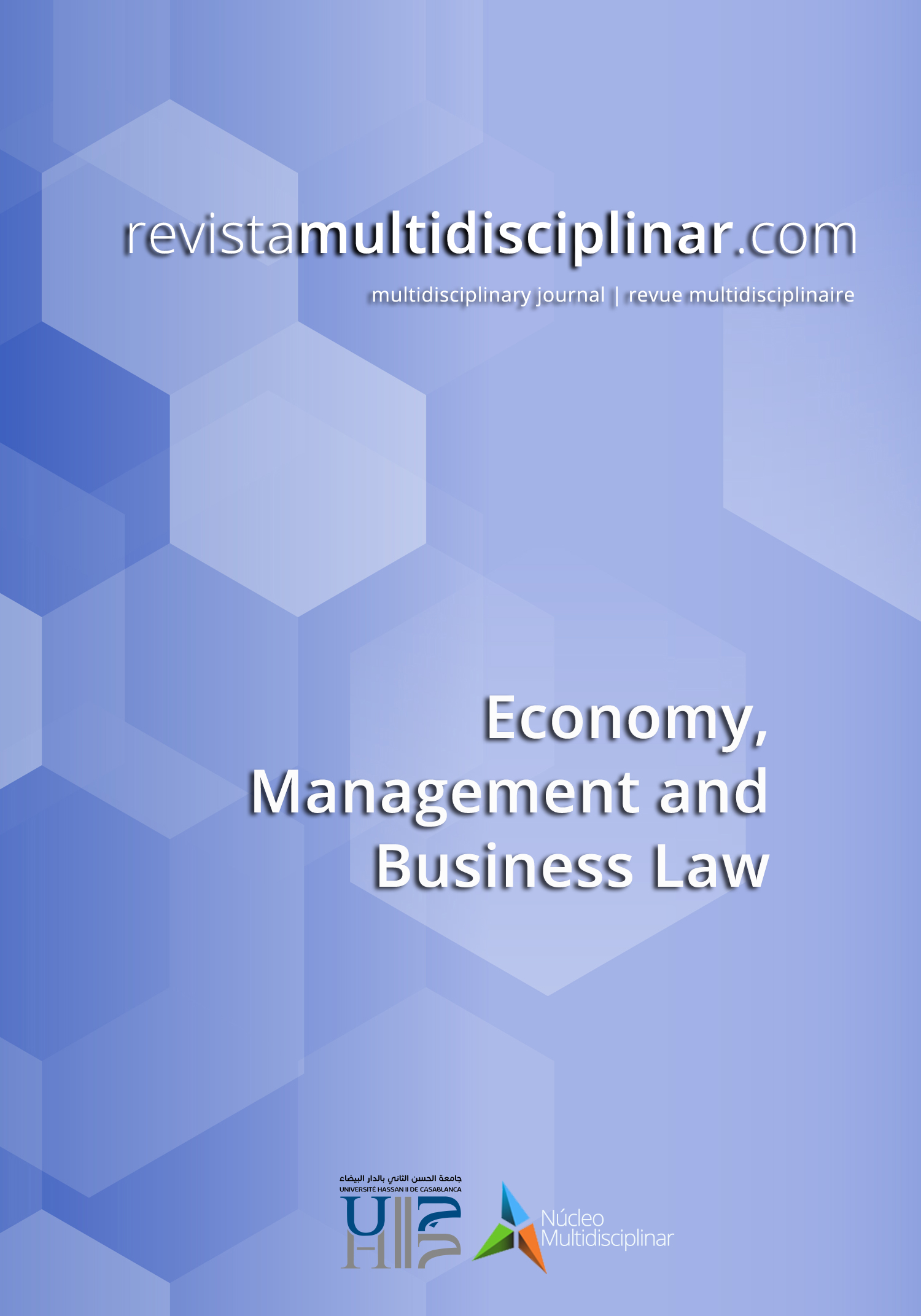Abordagem média geométrica para medir o Índice Composto
DOI:
https://doi.org/10.23882/rmd.24160Palavras-chave:
Índice composto, Monotonicamente crescente, Média geométrica, Teste de reversão de tempo, índices de cadeiaResumo
O Índice Composto (IC) combina medidas de indicadores sobre variáveis económicas, sociais, ambientais, iniciativas governamentais, bem-estar da saúde, psicológico, satisfação das necessidades básicas, social/cultural, etc. No entanto, as medidas existentes de IC sofrem de limitações. O presente documento propõe que a medida do IC seja a média geométrica (GM), que evita o escalonamento e a escolha de pesos. Esta medida ajuda a comparar melhor os países no tempo e no espaço e satisfaz as propriedades desejadas, como a função contínua monotonicamente crescente, a elasticidade constante, a identificação de áreas-chave, a redução do nível de substituibilidade, a formação de índices em cadeia para mostrar o crescimento do IC de um país e é menos afetada por valores atípicos. O índice, com ampla aplicabilidade, pode ser utilizado para a classificação de países e facilita o cálculo da média e da variância de uma amostra de países. Além disso, o índice satisfaz o teste de inversão temporal, ajuda a identificar as áreas críticas e a encontrar a contribuição dos indicadores componentes, a estimar os parâmetros populacionais e a testar hipóteses estatísticas. Podem ser construídos índices separados por domínios, considerando indicadores relevantes para um domínio. Trata-se, portanto, de uma melhoria em relação aos métodos existentes. Sugerem-se estudos futuros.
Referências
Ács, Z., Autio, E., & Szerb, L. (2014): National systems of entrepreneurship: Measurement issues and policy implications. Research Policy, 43(3), 476–494.
Alf, EF and Grossberg, JM. (1979): The geometric mean: Confidence limits and significance tests, Perception &Psychophysics, 26 (5), 419-421
Andrews, FM (1989): The Evolution of a Movement. Journal of Public Policy, 9(4), 401-405.
Appleby, J. & Mulligan, J. (2000) How well is the NHS performing? A composite performance indicator based on public consultation, King’s Fund: London.
Arrow, KJ & Raynaud, H.(1986): Social choice and multicriterion decision-making. Cambridge: MIT Press.
Arvis, JF, Saslavsky, D, Ojala, L, Shepherd, B, Busch, C, Raj, A, & Naula, T. (2016): Connecting to Compete: Trade Logistics in the Global Economy, World Bank, Washington DC
Atkinson AB (1970): On the Measurement of Inequality, Journal of Economic Theory, 2, 244-263.
Bandura, R. (2011): Composite indicators and rankings: Inventory 2011. Technical report, Office of Development Studies, UNDP, New York.
Bastien, CH, Vallieres, A. & Morin, CM. (2001): Validation of the Insomnia Severity Index as an outcome measure for insomnia research. Sleep Medicine, 2(4), 297–307.
Blancard, S. & Hoarau, JF. (2013): A new sustainable human development indicator for Small Island developing states: A reappraisal from data envelopment analysis, Economic Modelling, 30(C), 623-635
Bohringer, C., & Jochem, PE (2007): Measuring the immeasurable: A survey of sustainability indices. Ecological Economics, 63(1), 1–8.
Cendrero, A., Francés, E., Del Corral, D., Fermán, JL, Fischer, D., Del Río, L., Camino, M., and López, A. (2003): Indicators and indices of environmental quality for sustainability assessment in coastal areas: Application to case studies in Europe and the Americas. Journal of Coastal Research, 19(4), 919-933.
Chakrabartty, Satyendra Nath (2017): Composite Index: Methods and Properties, Journal of Applied Quantitative Methods, 12(2), 31-41
Chakrabartty, Satyendra Nath (2019): Limitations of Insomnia Severity Index and possible remedies, JSM Neurological Disorders and Stroke, 5, 1-9
Cummins, R., Eckersley, R., Pallant J., Van Vugt, J., & Misajon, R. (2003): Developing a national index of subjective wellbeing: The Australian unity Wellbeing Index. Social Indicators Research, 64(2), 159-190. https://doi.org/10.1023/A:1024704320683
Decancq, K., & Lugo, MA (2013): Weights in multidimensional indices of wellbeing: An overview. Econometric Reviews, 32(1), 7–34.
De Walt, DA, Rothrock, N, Yount S, Stone AA (2007): Evaluation of item candidates: The PROMIS qualitative item review. Medical Care; 45:S12-S21.
Distaso, A. (2007): Well-being and/or quality of life in EU countries through a multidimensional index of sustainability. Ecological Economics, 64(1), 163-180.
ElSarawy, MM (2016): Use of new technique to measure wellbeing index for North Africa countries in year 2012, Presented in the 34th IARIW General Conference Dresden, Germany, August 21-27.
EPI Report (2016): Global Metrics for the Environment, http://www.epi.yale.edu
Environmental Sustainability Index (2002): Yale Center for Environmental Law & Policy, New Haven.
European Commission (2001) Summary Innovation Index, DG Enterprise, European Commission: Brussels.
European Commission (2001b): Internal Market Scoreboard, DG MARKT, European
Commission: Brussels
Fare, R., Grosskopf, S. and Hernandez-Sancho, F. (2004): Environmental performance: an index
number approach, Resource and Energy Economics, 26(4), 343–352.
Finn, RH (1972): Effects of some variations in rating scale characteristics on the means and reliabilities of ratings. Educational and Psychological Measurement, 32(7), 255–265.
Freudenberg, M. (2003): Composite indicators of country performance: A critical assessment, OECD STI Working paper DSTI/DOC 2003/16, OECD: Paris.
Fusco, E. (2015): Enhancing non-compensatory composite indicators: A directional proposal, European Journal of Operational Research, 242(2), 620–630.
Greco, S, Ishizaka, A, Tasiou, M and Torrisi, G. (2019): On the Methodological Framework of Composite Indices: A Review of the Issues of Weighting, Aggregation, and Robustness, Soc Indic Res 141:61–94 https://doi.org/10.1007/s11205-017-1832-9
Grupp, H., & Schubert, T. (2010): Review and new evidence on composite innovation indicators for evaluating national performance. Research Policy, 39(1), 67–78.
Hartung, J., Knapp, G. and Sinha, B.K. (2008): Statistical Meta-Analysis with Applications.
John Wiley & Sons, Hoboken, 44. https://doi.org/10.1002/9780470386347
Herrmann, M. (2008): Rethinking the link between labor market flexibility and corporate
Competitiveness: a critique of the Institutionalist literature’, Socio-Economic Review, 6(4), 637–669.
Hertog, Sara (2013): The Association between Two Measures of Inequality in Human Development: Income and Life Expectancy, Technical Paper No. 2013/7, Population Division, United Nations
International Wellbeing Group (2013): Personal Wellbeing Index: 5th Edition. Melbourne: Australian Centre on Quality of Life, Deakin University. http://www.acqol.com.au/instruments#measures
Jacobs, R., Smith, P. and Goddard, M. (2004): Measuring performance: An examination of composite performance indicators, CHE Technical Paper Series 29, University of York
Johnston, BT & Sheehy, TP (1995):The Index of Economic Freedom. Heritage Foundation, Washington, pp. ix-21
Kasparian, J, and Rolland, A. (2012): OECD’s Better life index: can any country be well ranked? Journal of Applied Statistics, 39 (10), 1-8, DOI: 10.1080/02664763.2012.706265
Kaufmann, D., Kraay, A. and Mastruzzi, M. (2007): Growth and Governance: A Reply, Journal of Politics, 69(2), 555-562
Khan, F., Sadiq, R. and Veitch, B., (2004): Life Cycle iNdeX (LInX): a new indexing procedure for process and product design and decision-making. Journal of Cleaner Production. 12, 59–76
Kovacevic, M. (2011): Review of HDI Critiques and Potential Improvements, The Human Development Research Paper 2010/33, UNDP
Lambsdorff, JG. (2006): Causes and Consequences of Corruption: What Do We Know from a Cross-Section of Countries? Chapters in: Susan Rose-Ackerman (ed.), International Handbook on the Economics of Corruption, chapter 1, Edward Elgar Publishing.
Lee, JA and Souter, G. (2009): Is Schwartz’s Value Survey an Interval Scale and Does it Really Matter? Jr. of Cross-Cultural Psychology, 42(1), 76-86
Li, T., Zhang, H., Yuan, C. et al.(2012): A PCA-based method for construction of composite sustainability indicators, Int J Life Cycle Assess, 17: 593.
Lim, Hock-Eam (2008): The Use of Different Happiness Rating Scales: Bias and Comparison Problem? Soc Indic Res . 87:259–267
Loh, J. (Ed.) (2002): Living Planet Report 2002, World Wildlife Fund, Gland, Switzerland
Matteo Mazziotta, M. and Pareto, A. (2013): Methods for constructing composite indices: One for all or All for one? Rivista Italiana di Economia Demografia e Statistica, 67(2), 67-80
Meng, FY, Fan, LW, Zhou, P. and Zhou, DQ (2013): Measuring environmental performance in China’s industrial sectors with non-radial DEA, Mathematical and Computer Modelling, 58(5-6), 1047–1056.
Michalos, A., Smale, B., Labonté, R., et al. (2011): The Canadian Index of Wellbeing. [Technical Report 1.0]. Waterloo: CIW.
Mikulić, J., Kožić, I., & Krešić, D. (2015): Weighting indicators of tourism sustainability: A critical note. Ecological Indicators, 48, 312–314.
Nardo, M., Saisana, M., Saltelli, A. and Tarantola, S. (2005): Handbook on Constructing Composite Indicators: Methodology and User Guide, OECD Statistics Working Papers, 2005/3, OECD Publishing.
NEF (2008): National Accounts of Well-being: Bringing Real Wealth onto the Balance Sheet. (www.nationalaccountsofwellbeing.org/public- data/files/national-accounts of-well-being-report.pdf).
OECD (2008): Handbook on constructing composite indicators: Methodology and user guide. Paris: OECD Publishing.
OPHI (2018): Global Multidimensional Poverty Index 2018: The Most Detailed Picture to Date of the World’s Poorest People. Oxford Poverty and Human Development Initiative, University of Oxford.
Orff, HJ, Drummond, SP, Nowakowski, S, Perlis, ML (2007): Discrepancy between subjective symptomatology and objective neuropsychological performance in insomnia. Sleep, 30, 1205–1211.
Porter, ME and Stern, S (2001): Innovation: Location Matters. MIT Sloan Management Review, 42, 28-36.
Ram, R. (1982): Composite indices of physical quality of life, basic need fulfillment, and income. A principal component representation. Jr. of Development Economics, 11(2), 227–247.
Reeve BB, Hays RD, Bjorner JB, Cook KF, Crane PK, Teresi JA, et al. (2007): Psychometric evaluation and calibration of health-related quality of life item banks. Medical Care; 45:S22-S31.
Ryff, CD, Keyes CLM (1995): The structure of psychological well-being revisited. Journal of Personality and Social Psychology, 69(4):719–727
Saisana,M., Saltelli, A. and Tarantola, S. (2005): Uncertainty and sensitivity analysis techniques as tools for the quality assessment of composite indicators, Jr. of Royal Statistical Society Series A, 168(2),1-17
Saisana, M., & Tarantola, S. (2002): State-of-the-art report on current methodologies and practices for composite indicator development. Report EUR 20408 EN. European Commission–Joint Research Centre, Ispra.
Sava, AM.(2016): Weighting method for developing composite indices. Application for measuring sectoral specialization, Journal of Applied Quantitative Methods,11(3),77–84.
Smith, P. (2002): Developing composite indicators for assessing health system efficiency, in Smith, P.C. (ed.) Measuring up: Improving the performance of health systems in OECD countries, OECD: Paris.
Scientific Peer Review Group (SPRG) (2001): Report of the Scientific Peer Review Group on Health Systems Performance Assessment, WHO: Geneva. http://www.who.int/health-systemsperformance
Tarabusi, C., & Guarini, G. (2013): An unbalance adjustment method for development indicators. Social Indicators Research, 112(1), 19–45.
UNCHS (2001): The State of the Worlds Cities, UN, Nairobi.
UNDP (2010): Human development report: The real wealth of nations: Pathways to human development. New York.
UNDP (2007): Fighting climate change: Human solidarity in a divided world. [Human development report 2007/2008]. New York: Palgrave Macmillan
Ware, JE & Sherbourne, CD (1992): The MOS 36-item Short-Form Health Survey (SF-36): Conceptual framework and item selection. Medical Care, 30, 473-83.
World Economic Forum (WEF) (2002): An initiative of the Global Leaders of Tomorrow Environment Task Force. Pilot Environment Performance Index. www.ciesin.columbia.edu/indicators/ESI/EPI2002_11- FEB02.pdf
Yang, FC, Kao, RH, Chen, YT, Ho, YF, Cho, CC, & Huang, SW (2018): A common weight approach to construct composite indicators: The evaluation of fourteen emerging markets. Social Indicators Research, 137, 463 – 479. http s://doi.org/10.1007 /s112 05-017-1603 -7.
Yang, L., (2014): An inventory of composite measures of human progress, Technical report, UNDP, Human Development Report Office.
Downloads
Publicado
Como Citar
Edição
Secção
Licença
Direitos de Autor (c) 2023 Satyendra Chakrabartty

Este trabalho encontra-se publicado com a Creative Commons Atribuição-NãoComercial 4.0.







